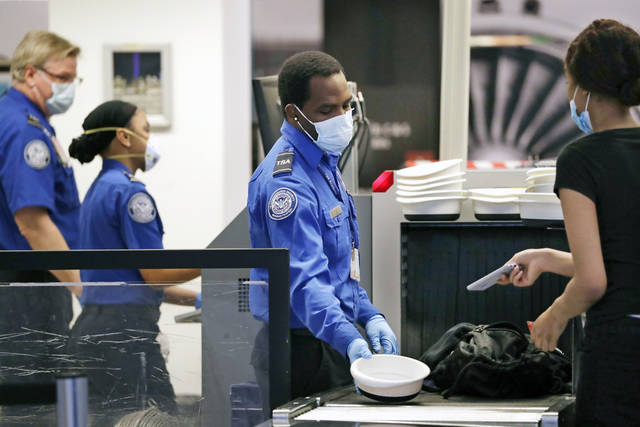Sheldon Jacobson: TSA firearm catch rate doubles, but are flyers safer?
The TSA announced that the rate of firearm detection at airport security checkpoints doubled from 2019 to 2020. At the same time, the number of passengers screened dropped by 500 million. Does this mean that air travelers were safer in 2020, or were there more firearms being carried onto airplanes?
The clue to resolve this quandary lies in airport security environments with covid-19 and the profile of passengers who are now flying.
In December 2020, the TSA screened over 60% fewer passengers than were screened in December 2019. Airport passenger screening is an intense process of managing the flow of people and items using security technology to detect threats, effectively looking for needles in haystacks.
Most passengers pose no security risk to the air system. Yet the TSA must identify the handful of passengers with malicious intent. Since identifying intent is problematic, the TSA does the next best thing and screens for threat items like firearms. A total of 3,257 firearms were found, with southern and western airports leading the pack. That comes to 10 firearms for every million passengers screened.
With fewer passengers, TSA officers have fewer distractions and are under less pressure, effectively rendering them more attentive. This environment is akin to how PreCheck lanes are managed, where passengers undergo background checks in exchange for expedited screening at airports. Screening less risky passengers allows for more efficient physical passenger screening by TSA officers, just as less TSA officer distraction means better performance.
The other issue is the pool of travelers who chose to travel by air in 2020. Over 6,000 TSA officers have been infected by covid-19 over the past year, with 14 of them dying. This represents 13% of all TSA officers stationed at airport security checkpoints. Airport security checkpoints are covid-19 hot zones. In essence, air travel represents a health risk for contracting the virus. People who choose to fly either must do so or are willing to accept the health risk. This makes them a pool of people who are inherently more risk tolerant. With such a bent, are they more likely to own a firearm?
The answer is yes. Conservatives are more likely to own a firearm than their liberal counterparts. These same people are also less likely to view covid-19 as a personal health risk. By reducing the pool of risk averse travelers, there remains a similar number of firearms with a smaller number of passenger screenings, resulting in a higher firearms catch rate.
The other side of the airport security environment is whether the TSA is doing anything different today than they did in 2019 to increase the firearm detection rate. In response to covid-19, face coverings, face shields and physical distancing may be making it more difficult to detect threat items, since they add new distractions for TSA officers. This further supports the point that the security risk characteristics of travelers today are fundamentally different than it was prior to covid-19.
Lastly, if the TSA is doing a better job today in detecting firearms, then this implies they missed many in 2019 and before. If they could have detected firearms in 2019 at the same rate as they did in 2020, then over four thousand additional firearms would have been confiscated in 2019, effectively preventing them from passing undetected through airport security checkpoints.
There is both good news and bad news with the TSA announcement. The bad news is that the TSA does miss firearms, and they will continue to do so in future. The good news is that there have been no reported incidents with any missed firearms on airplanes during flight. This means that the preponderance of firearm toting passengers have no malicious intent, and those carrying firearms who passed through undetected were harmless.
So, are airplane passengers safer today than they were before? The TSA suggests they are, but in reality, the number of firearms detected is not the right measure of passenger safety. One thing that the TSA has done right to improve airport security is launch and promote PreCheck. Until the percentage of PreCheck screenings reaches 80%, airport security will continue to be the necessary evil for air travel, rather than the optimal means to protect the air travelling public.
Sheldon Jacobson is Founder Professor of Computer Science at the University of Illinois at Urbana-Champaign. His research on risk-based security provided the foundational concepts that led to TSA PreCheck.
Remove the ads from your TribLIVE reading experience but still support the journalists who create the content with TribLIVE Ad-Free.

